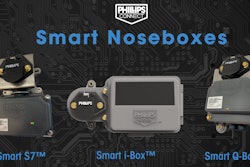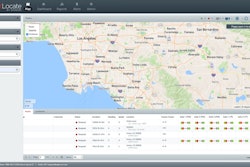
As AT&T and other telecommunication companies end the life of their 3G networks, fleet managers are upgrading or searching for new telematics that comply with 4G.
Searching for a new telematics provider can be a daunting and time-consuming task with so many options on the market. Fleet managers have to consider features and functionalities, cost, installation, training and more.
The Truckload Carriers Association recently held a “Switching Telematics Providers Without Going Crazy” webinar, and the experts said it’s worth the time it takes to research which software is best for your fleet with a “you get what you pay for” mentality.
Telematics provider Geotab hosted the webinar, joined by two trucking company leaders and a shuttle and charter bus company leader, to give insight into the process and provide tips on best practices when considering a shift to a new vendor.
Anthony Meloy, training and recruiting manager at Trailiner, and Ryan Steagall, vice president of information technology at Big G Express, Inc., said the transition from 3G to 4G was a top reason their companies were looking to make a switch. Meloy said other factors included customer service issues with Trailiner’s previous provider as well video resolution and equipment training for drivers. Gregory Hendricks, vice president of compliance and operations at Salt Lake Express, said his company was having issues with hardware reliability in which it couldn’t keep the units working from a back-office standpoint and the vendor’s website was frustrating to navigate.
Hendricks and Meloy made the switch to Netradyne Driveri. Big G Express made the switch to Geotab after searching two or three years in advance of the 3G sunset, Steagall said.
Meloy said that’s one thing he wishes he had done differently: an ample amount of research on the different telematics vendors.
“I had an overall idea of what we were looking for,” he said. “I reached out to this one; I reached out to that one. We had a company that we wasted 6, 7, 8 weeks just to find out that it wasn’t going to work.”
He said he recommends fleets to talk to their peers about the pros and cons of their telematics provider, as well as ensure the vendors are knowledgeable about their own product.
Hendricks recommended fleets test each unit with a trial – whether it’s free or not – because he found that different products didn’t always work with the different types of vehicles in his company’s fleet. And Steagall said it’s important to ensure the software can be integrated with the transportation management system and other systems in play.
“Make sure whoever you're dealing with knows you, knows the customer,” he said. “We had talked to several people before, and they got down to it, and they were still confused on what transportation management system we were running.”
Hendricks said his biggest frustration was with salespeople, but a close second was getting his drivers on board with the change.
“My drivers were having a very difficult time learning the new technology,” Hendricks said.
Meloy, speaking from experience as a previous truck driver, said drivers don’t like change. He said the best way to integrate a new system is to recruit different drivers to perform trials on a product that has positive industry feedback and have them serve as the spokesperson for that product to their fellow drivers. He said ample training is also key.
Steagall said that’s what his team did.
“During our trial, we had a driver that acted like he owned the product … We saw that he was going to be a good champion for the training portion, so we brought him off the road, in the office, and we developed our own training videos, our own training scripts,” Steagall said. “No one likes change. Change is always hard. The first week that a driver took it out, he wanted to throw it out the window, but by the end of week two, he loved it, wouldn't give it up.”
Hendricks used the same method of getting key drivers on board, he said. But another benefit, he said, is the Netradyne Driveri app, which adds gamification to the system, allows drivers to compete against each other for best driving scores.
Hendricks said his company began posting driver scores, and the competition to be better was on, eliminating any previous negative connotations. He said he only has one out of 160 drivers that doesn’t like the camera system after one year using it. And the main reason is the benefit it provides in the event of an accident.
“Every time we've had an accident occur, the cameras have saved us and helped us, and we make sure our drivers understand that,” he said. “I always want to stress to my drivers that they're craftsmen; they're skilled. They're not just idiot drivers. So that technology is there not to punish them; it's there to help them and assist them in their craft. So we really tried hard to avoid any discipline off the cameras. We try to make it more of an incentive.”
Meloy said his company offers a monetary reward for drivers with the highest scores. He said his drivers, who have access to their video footage via app, have embraced the cameras and are proud when they perform well.
But it wasn’t so easy at first, so Meloy brought his drivers into his office to show them the system dashboard so they could see what he sees on their cameras.
“One thing that was very scary for a lot of drivers is they hear AI, and a lot of us who are probably 35 years and older have all seen Terminator, and AI is, ‘Oh they're about to become self-aware,’” Meloy said. “Let them know it's become less invasive. It’s not going to be … somebody sitting behind a computer watching your every move.”
Steagall said the more training you offer, the less fear drivers will have in switching over.
Meloy said training is a big element when looking for a new provider. Other things to consider when researching vendors, he said, is find out exactly what they charge for different features as some companies offer a base level and piecemeal products instead of an all-in-one. He said it’s also important to ask how quickly you can access video and is the resolution high enough.
“You can have cameras … but if they don’t have resolution where you can capture video that makes any sense, you may as well not even have one,” he said. “We had a driver that was pulled over in the middle of the night, and the officer (said) he had a cell phone in his hand on the steering wheel. We're able to send that video of him where it clearly shows that he did not have a cell phone in his hand.”
Hendricks said it is also important to ask vendors what the product looks like today, and what features do they plan to discontinue or add in the future to ensure it will continue to operate properly with your systems.











